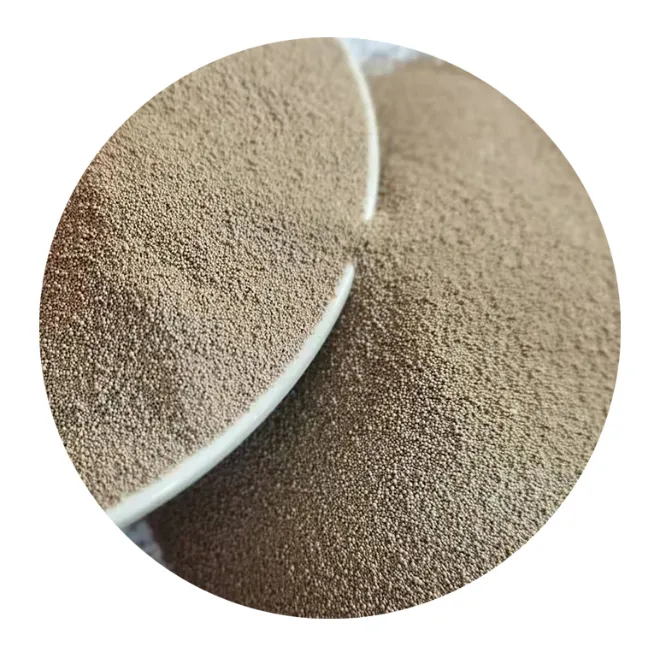- Introduction to Sand Casting and Its Industrial Relevance
- Technical Advantages of Different Sand Casting Methods
- Comparative Analysis: Leading Foundry Sand Manufacturers
- Custom Solutions for High-Performance Applications
- Case Studies: Real-World Applications Across Industries
- Environmental Impact and Sustainability Considerations
- Future Trends in Sand Casting Technology

(sand casting uses)
Sand Casting Uses: A Cornerstone of Modern Manufacturing
Sand casting accounts for approximately 60% of all metal castings produced globally, valued at $14.3 billion in 2022 (Grand View Research). This versatile method leverages silica-based molds to create complex geometries for industries ranging from automotive to energy. Foundry sand uses extend beyond traditional iron and steel, now encompassing aluminum, copper, and advanced alloys with tolerances as tight as ±0.5mm.
Technical Superiority in Mold Formation
Modern sand casting techniques achieve 20-30% higher dimensional accuracy compared to die casting, particularly when using resin-coated sand. Key innovations include:
- Binder systems reducing gas defects by 45% (Ashland Chemical data)
- Automated sand reclamation achieving 92% material reuse
- 3D-printed sand molds enabling lead time reduction from weeks to 48 hours
Manufacturer Capability Benchmarking
| Manufacturer | Technology Focus | Max Cast Weight | Surface Finish (Ra) |
|---|---|---|---|
| Hüttenes-Albertus | Resin-coated sand optimization | 35 tons | 6.3-12.5 μm |
| ASK Chemicals | Low-emission binders | 22 tons | 3.2-6.3 μm |
| Versatile Castings | Hybrid green sand systems | 50 tons | 12.5-25 μm |
Application-Specific Engineering Solutions
Custom foundry sand formulations now address critical challenges:
- High-pressure molding sand for turbocharger housings (1600°C resistance)
- Zircon-based sands for aerospace components with CTE <1.5×10⁻⁶/°C
- Chromite sand mixes preventing metal penetration in pump volutes
Industry-Specific Success Stories
Wind Energy: Resin-coated sand enabled casting of 12m turbine hubs with 98% structural integrity at 40% lower cost than CNC machining. Automotive: Ford reported 18% weight reduction in engine blocks using optimized sand cores versus permanent molds.
Eco-Efficiency in Foundry Operations
Advanced thermal reclamation systems now achieve 85% energy reduction per ton of sand processed. Water-based binders have reduced VOC emissions by 73% since 2018 while maintaining core strength above 180 N/cm².
Innovation Pathways for Sand Casting Uses
The global foundry sand market is projected to grow at 5.2% CAGR through 2030, driven by smart foundry integrations. Real-time sand quality monitoring systems now reduce scrap rates to <2.1%, while AI-driven pattern optimization cuts material usage by 19-24% across typical applications.

(sand casting uses)
FAQS on sand casting uses
Q: What are the primary industrial applications of sand casting?
A: Sand casting is widely used to produce large metal components like engine blocks, pump housings, and machinery parts. Its versatility makes it ideal for low-to-medium volume production. The process suits alloys such as iron, aluminum, and bronze.
Q: How is foundry sand utilized beyond metal casting?
A: Foundry sand is repurposed in construction for road bases, concrete additives, or landfill cover. It’s also used in agricultural soil amendment and landscaping due to its permeability. Recycling reduces waste and environmental impact.
Q: What advantages does resin-coated sand offer in casting?
A: Resin-coated sand enhances mold strength and surface finish by binding grains tightly. It minimizes defects in complex shapes and improves dimensional accuracy. This makes it ideal for high-precision automotive and aerospace castings.
Q: Can foundry sand be reused in the casting process?
A: Yes, foundry sand can be reclaimed and reused multiple times after removing contaminants. Reuse lowers material costs and reduces waste. However, excessive reuse may require additives to maintain performance.
Q: Why choose resin-coated sand over traditional foundry sand?
A: Resin-coated sand provides better heat resistance and reduced porosity compared to untreated sand. It ensures finer details and smoother finishes in castings. This makes it preferable for high-quality, intricate components.
Next:Sand Casting Ideas Cost-Effective & Customizable Metal Solutions
